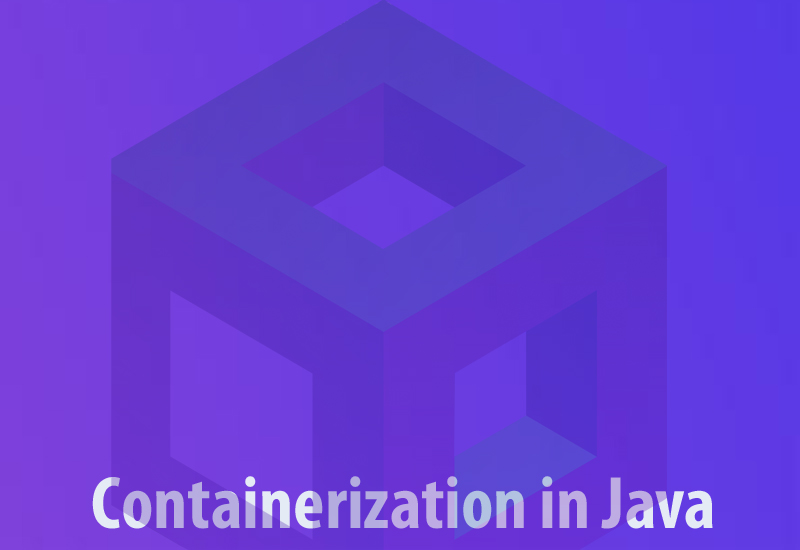Running software in containers is gaining in popularity for developers. Containers are typically collections of pieces of software and environment, running together in a single system. Developers take these systems and test them in the form of container images, which are then deployed to large environments once they’re acceptable. While in the past there have been some hiccups to using Java as the programming language for containerization, it’s becoming easier for Java programmers to use this time-saving tactic.

Addressing the issues of multiple environments
Containerization holds appeal because of its ability to solve many problems associated with multiple environments. The issue, traditionally, is that when code is developed within one environment, it often doesn’t run the same way when transferred to another. This creates errors which a developer must take the time to address and fix, creating downtime and preventing users from accessing the application. Nobody wants a newly launched app to not work right, which is why using containers and frequently testing is a good method for deployment. The container platform generates identical copies of the system created within a specific environment through the container image. The enables the same software to run anywhere because containerization adjusts for changing environments. Essentially, identical software can seamlessly be deployed over and over again regardless of the environment.
Making it easier for developers
The impact of containerization is very positive for developers who are always looking for strategies that help save them time and reduce redundancies. With the ability to deploy a single system regardless of the environment, the work of a developer becomes easier. They’re able to complete projects faster and more efficiently across hybrid infrastructures. Additionally, work requires fewer resources since containers don’t hold operating system images.
The use of containers offers so many benefits that many organizations are considering the technology if they aren’t using it already. According to The 2018 Container Adoption Benchmark Survey, 47 percent of IT leaders plan to deploy containers in production, while 12 percent already have. This level of interest demonstrates the value of containerization.
Providing better service
In addition to supporting the work of developers, containerization improves service associated with the systems to the user. Consistent service becomes more easily enabled with mixed-and-matched software, while overall delivery is simpler and more predictable. A consistent deployment through multiple container platforms and cloud providers becomes a seamless process with the help of containerization.
Working with minimal limitations
Although not perfect, containerization’s benefits may outweigh its limits, most of which occur as a result of installing any container on an old version of an application. This increases vulnerabilities but can be addressed with a quick application update. Containers are also not immune to the types of bugs and error concerns that plague traditional Java development company. Flaws, outages and security incidents can still occur when containers are exposed to certain variables.
The best remedy to prevent any serious issues from arising is constant testing. Checking throughout the production process allows developers to solve any threats before they can make a big impact. Quality assurance teams can help ensure the containerized apps are tested under all the circumstances that could be present while the system is in production. This creates a minimal risk for issues to arise.
Creating container systems with Java
Using Java to create container systems presents a unique situation due to the existing components of the programming language itself because Java consists of the language, specifications, and runtime. Containers interact most with Java runtime since it occurs within them. With this unique set up, communication issues can occur if a system isn’t released just right.
For example, a JVM-based application is deployed through containers after a successful check as a test system. However, the release does not achieve the same performance it did during testing. After some checking, a technical issue is discovered as the cause of the hiccup. The application has been programmed to limit CPU share to one in the settings. This leads to a miscommunication at deployment because the application ends up seeing multiple CPU cycles because of the programming language. Faced with more CPUs than it’s been told to use, the container application ends up spending its time dealing with and switching between different threads. As a result, it can’t get the actual work done it was released to do. This example of a miscommunication problem is the most prominent type of issue related to Java and containerization. It’s not an issue that impacts everyone and is something developers have worked around thus far.
The good news, for Java developers, is that this is a known issue, and it’s being addressed with OpenJDK10. One of the new support features for this Java release is that it will include support for CPU shares.
Making Java a better language for containerization
Addressing container-related problems like the CPU share will help keep Java as a relevant programming language for developers hoping to employ time-saving strategies like containerization to application release.
Sources:
https://jaxenter.com/containers-need-know-160733.html
https://jaxenter.com/nobody-puts-java-container-139373.html
0 Comment(s)